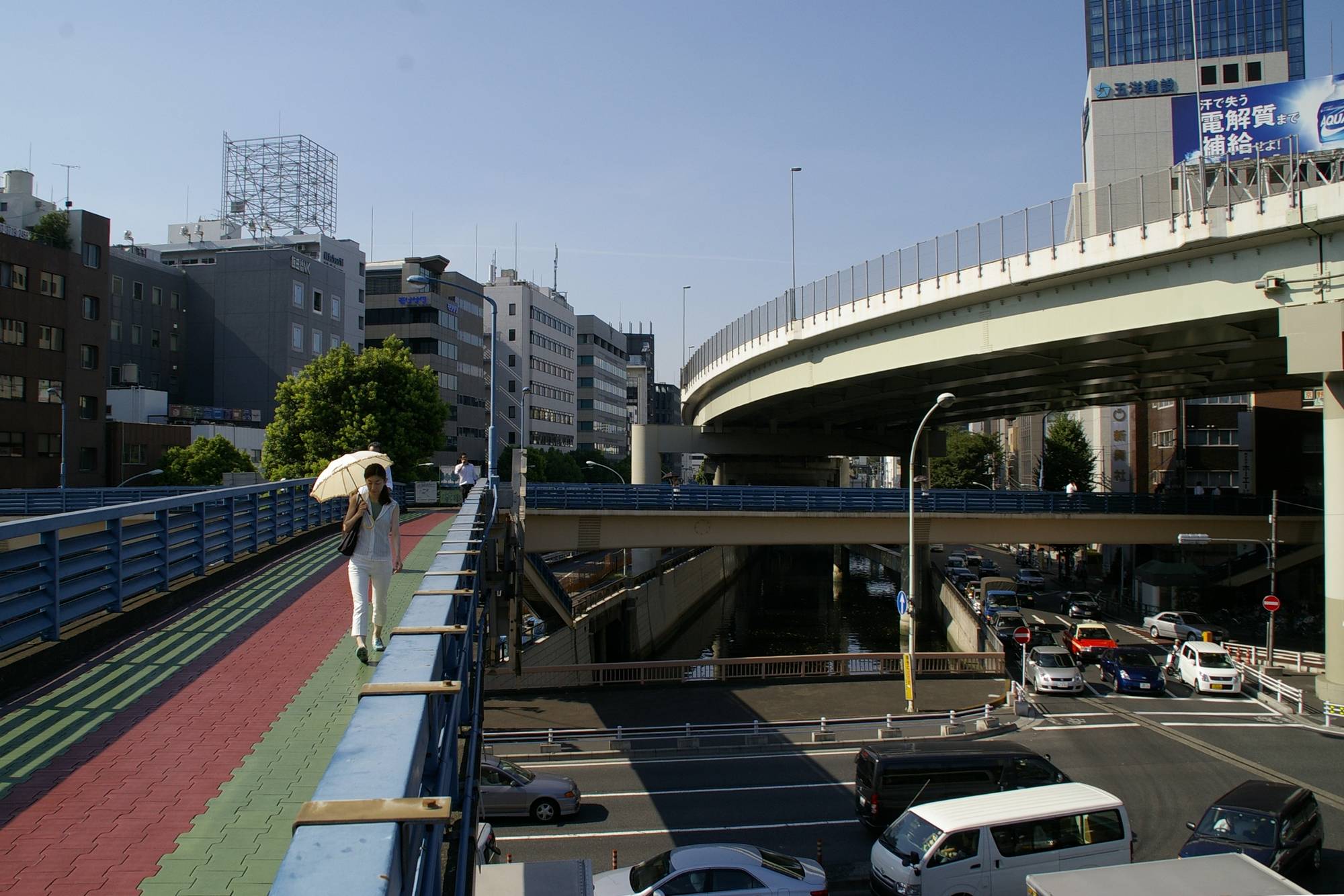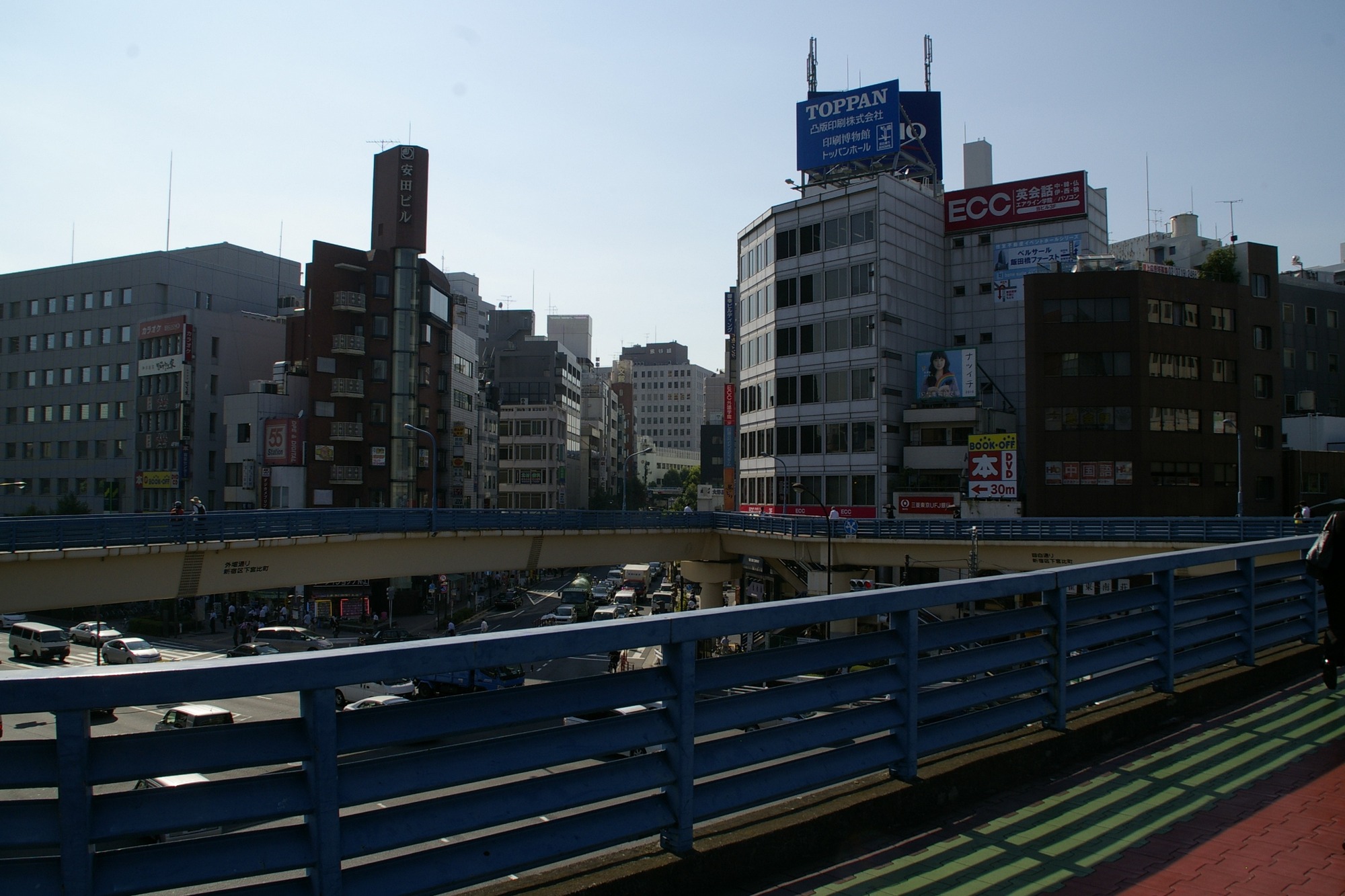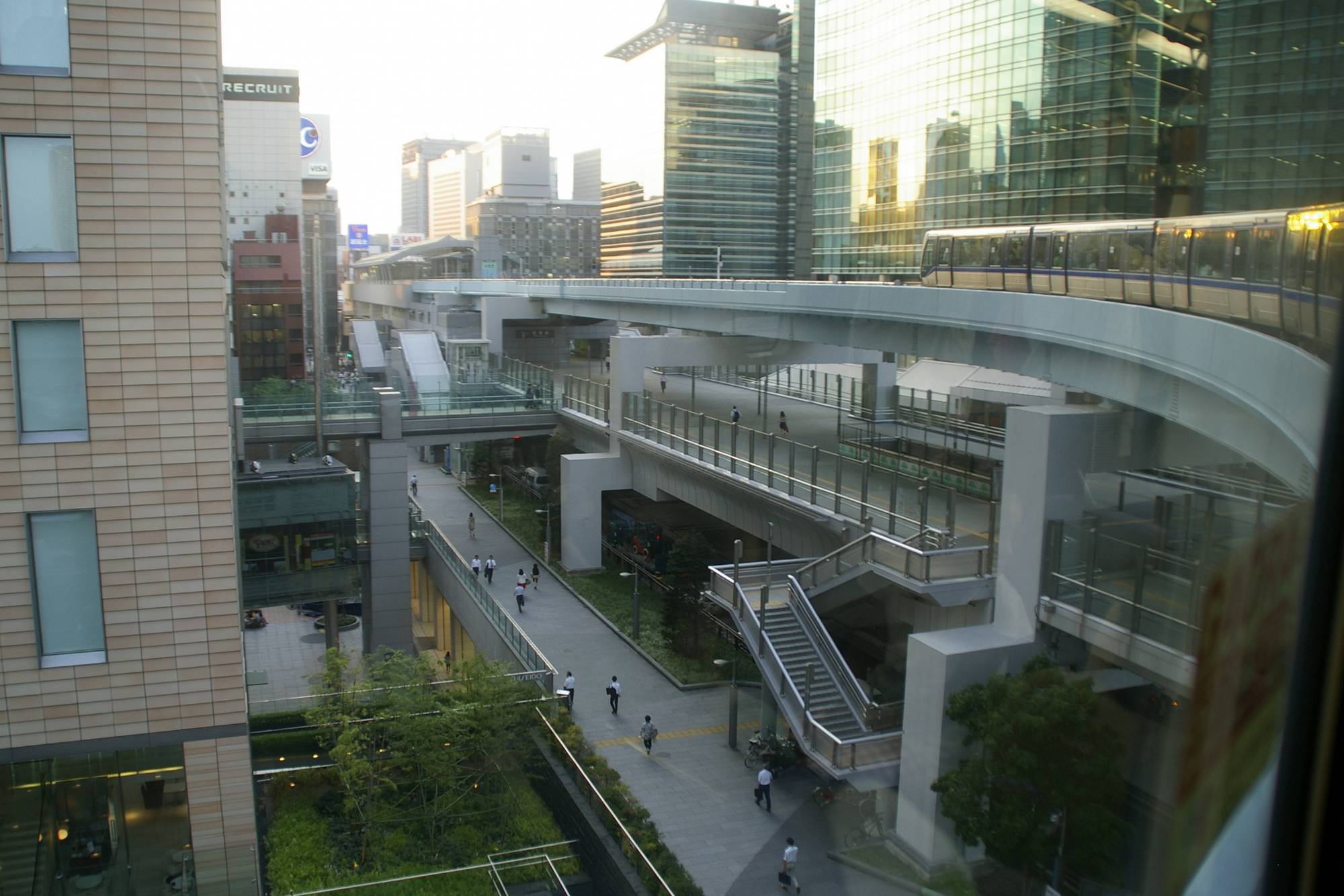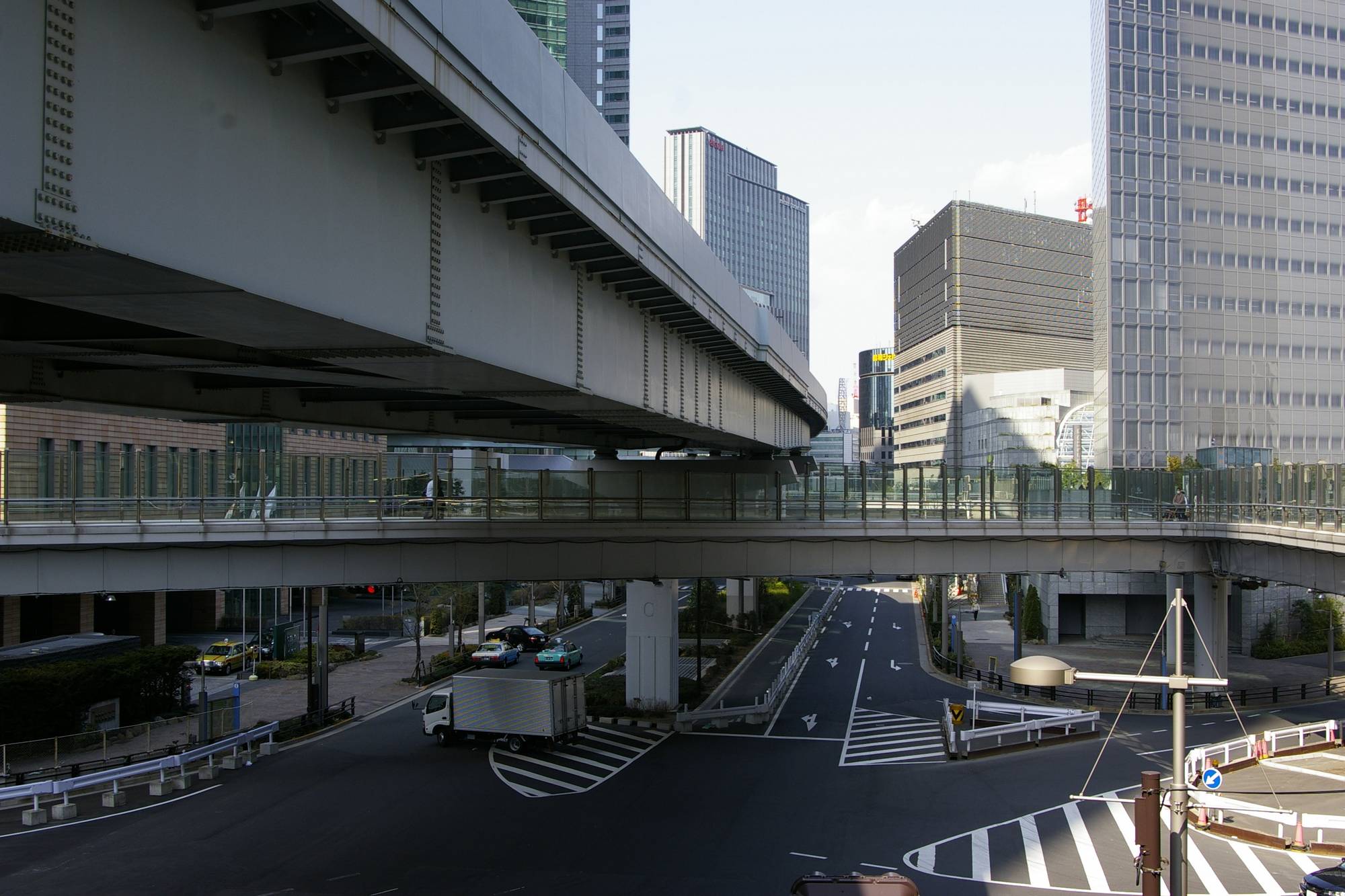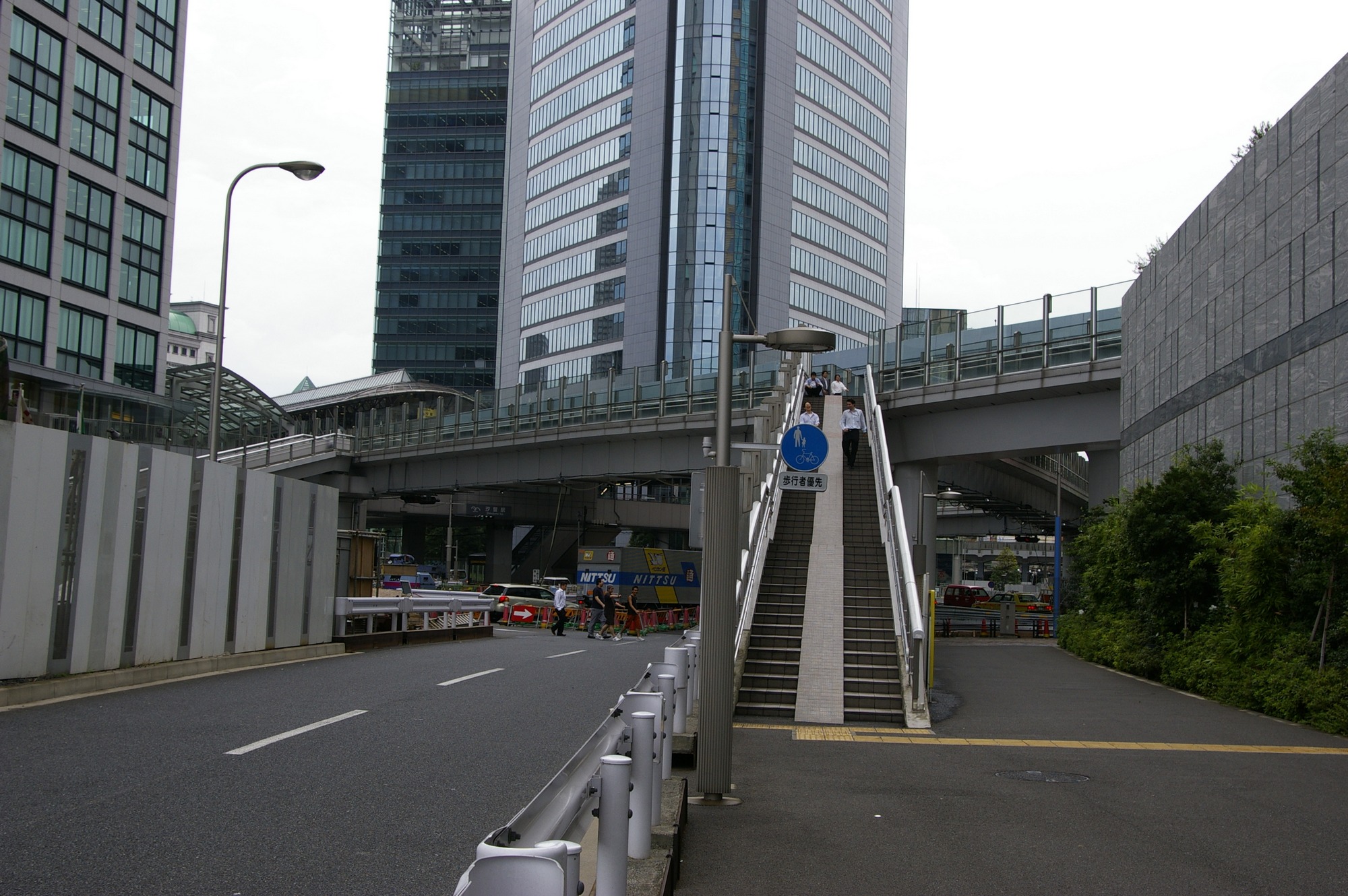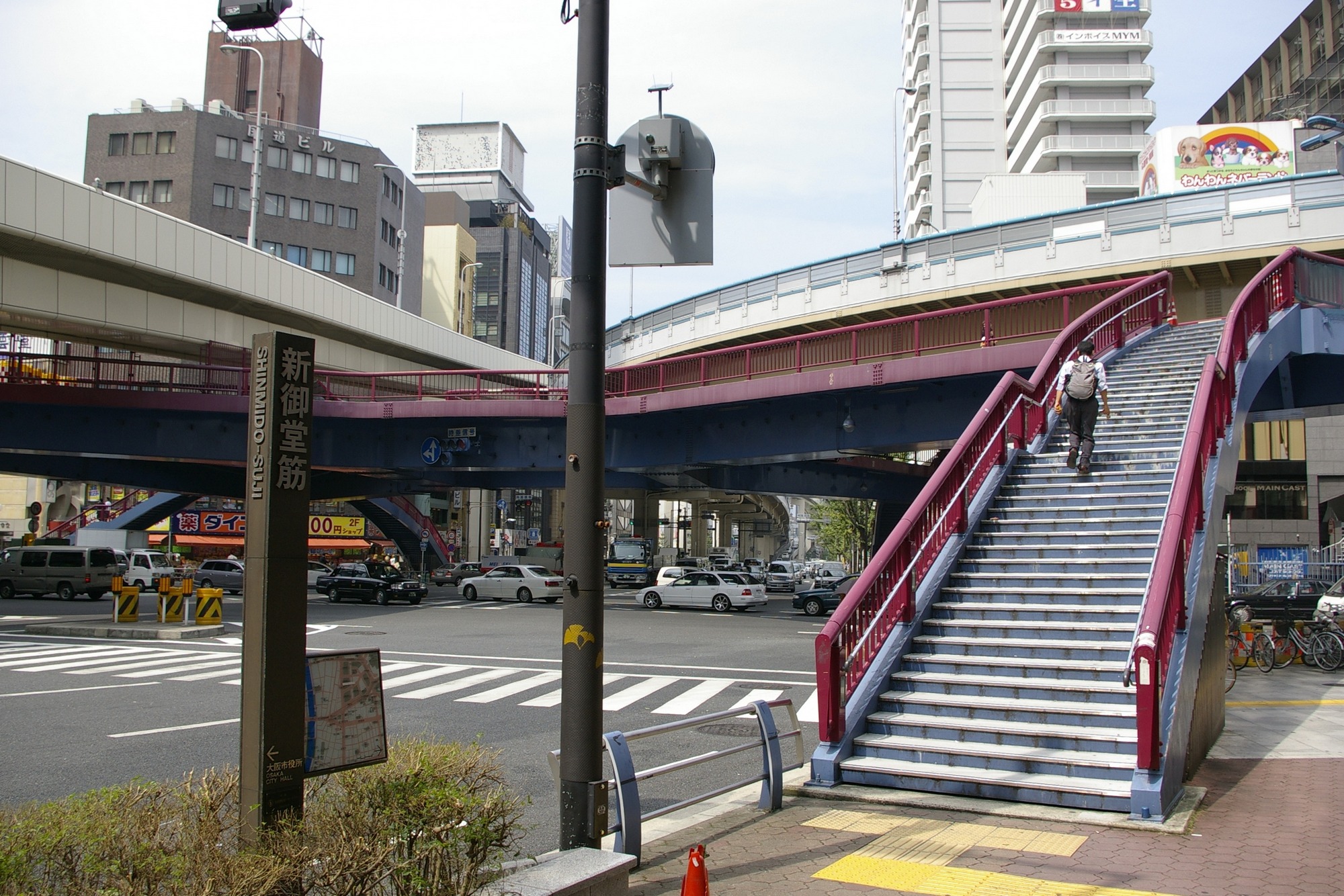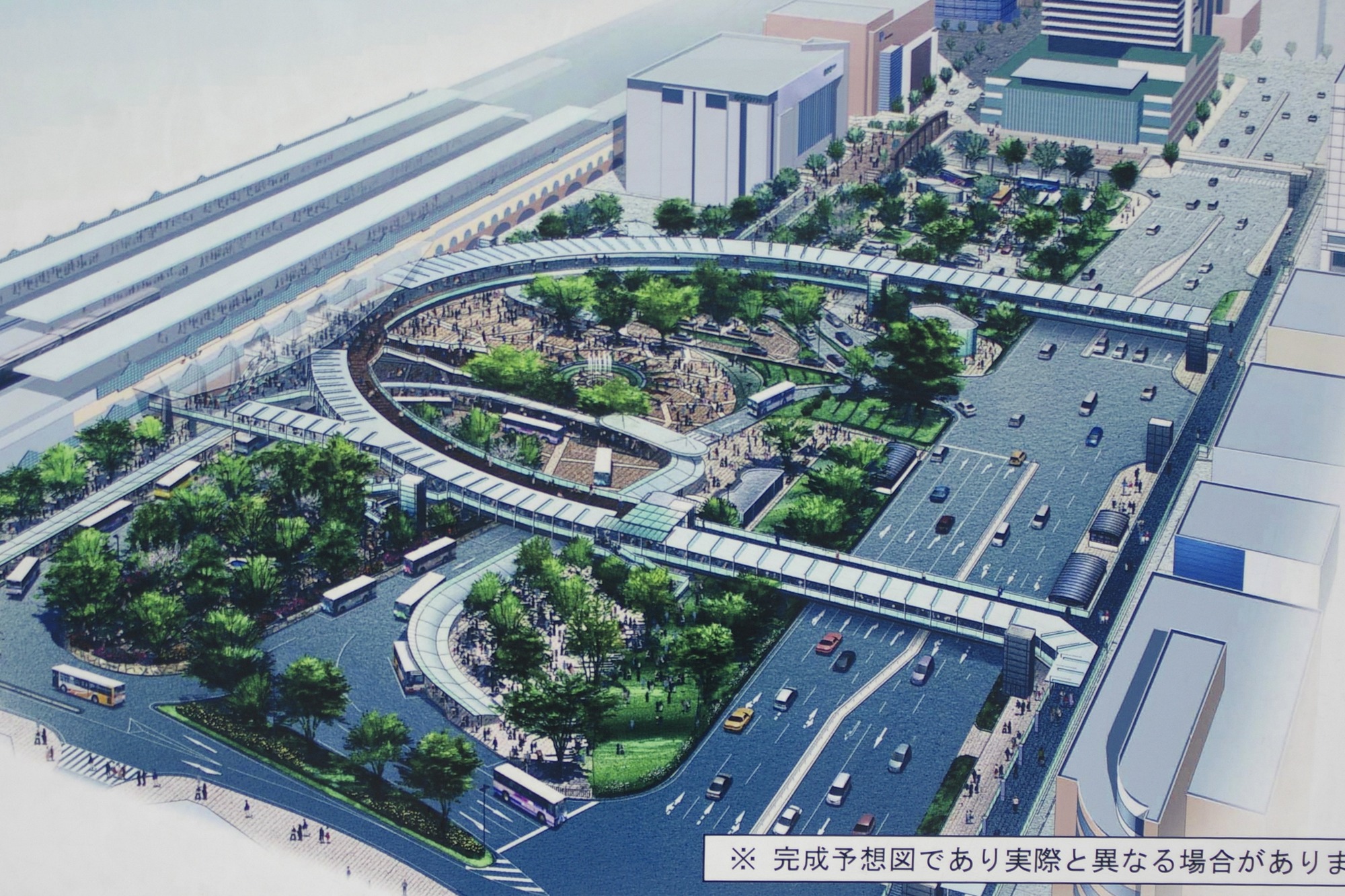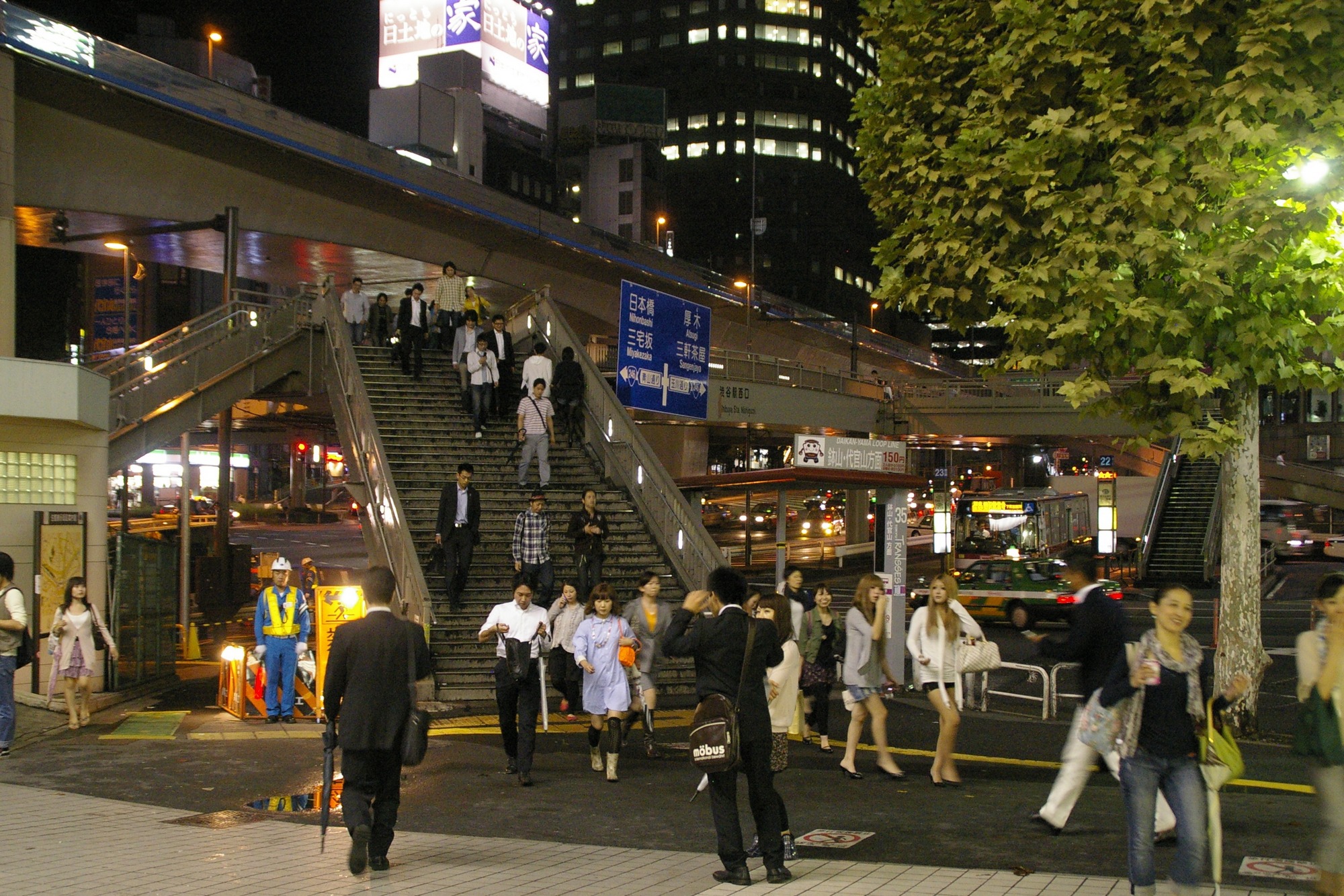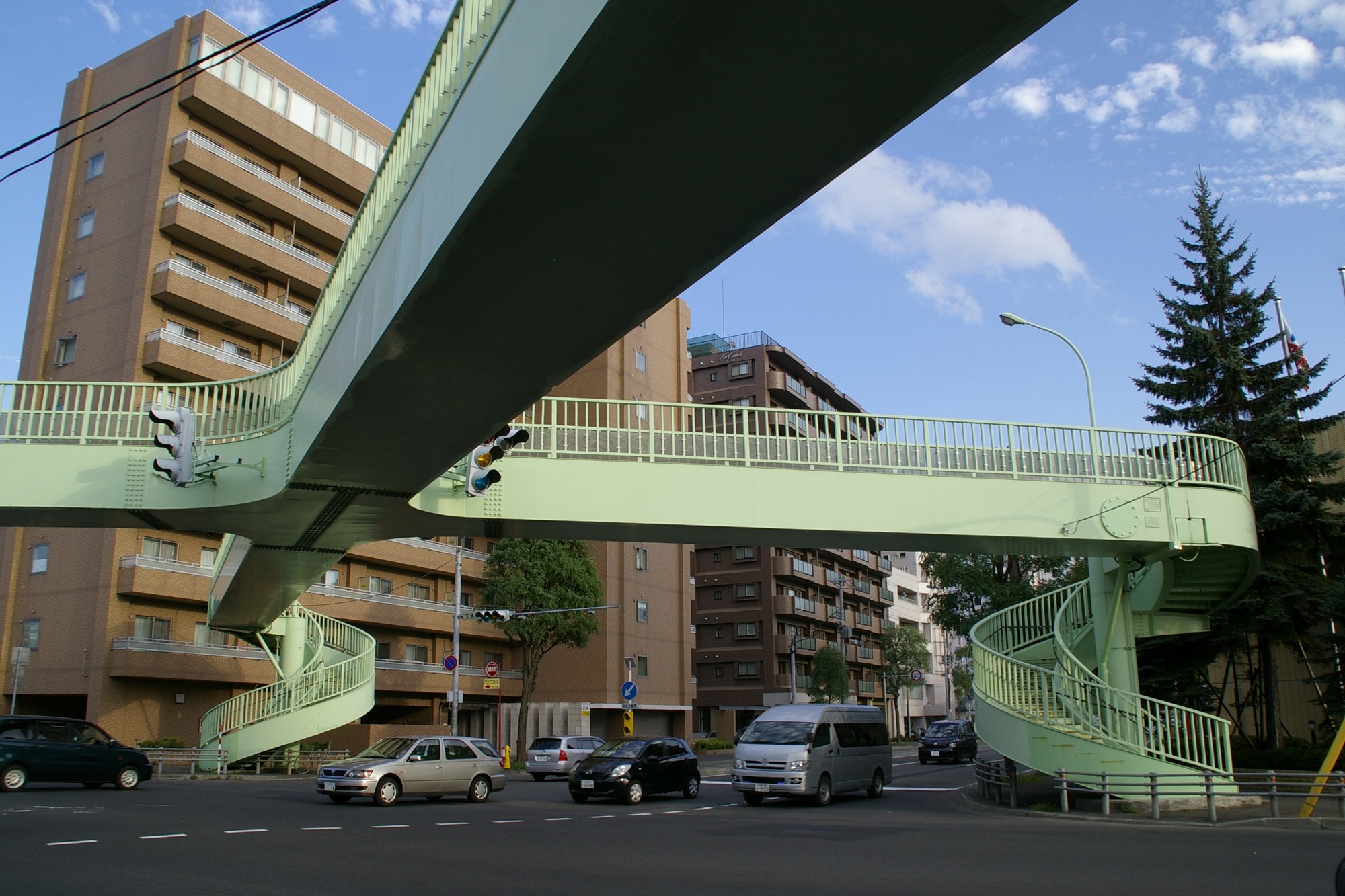Pedestrian decks are everywhere in Tokyo and all over Japan. What the roundabout for England (sometimes nothing more than a white circle in the center of the junction, os the pedestrian deck for Japan. They are simple ones. Just a tiny bridge with stairs on both side of the street. But there are also very complex constructions; melting into train stations and office buildings. They are art work. They cancel the meaning of „ground level“.
There is a practical reason behind it. There are no traffic lights for pedestrians and also crossing a street on traffic light at a junction is sometimes tricky. The green phase is reduced to a minium. Imagine to stop traffic in Tokyo for people to walk across the street. No way. Tokyo is to complex. You have to seperate car traffic and pedestrians.
Iidabashi und Shimbashi
The pedestrian deck in Iidabashi for example is a complete ring, connection all corners of the junction. Additionally there is an express way above the pedestrian deck. It is next to the JR station and like an starter drug. The next level the one between Ginza is Shimbashi. It is a good example for a pedestrian deck that was built after the streets were built. Shimbashi was on of my first impressions of 3D-Tokyo in 2004. My second walk thru the city passed here while I was heading for Nihonbashi.
Shiodome
One of the most complex pedestrian decks is the one in Shiodome. This one is also mentioned in the book „21st century Tokyo – A guide to Contemporary Architecture“. The architecture in Shiodome will get it’s in blog entry. If you visit this area you can arrive by subway or you walk from Hamarikyu Teien. Do the second one. The garden is really amazing. If you leave the north gate you are mostly in front of the pedestrian deck. It is the entrance to a maze of pathways between the buildings of Shiodome. After visiting the garden the stairs are like stairs into a different world.
Osaka, Saporro, …
The pedestrian decks become more than a passage way to the other side of the street. Japan tries to separate pedestrians from the traffic. It even is part of city development. Sooner or later I will return to Gifu and check how the plan was realized. The trains already stop in the upper level. Why not move the pedestrian up too.

